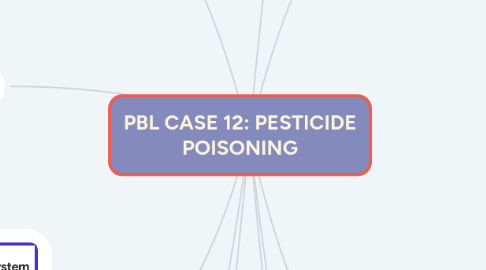
1. Autopsy
1.1. What is it?
1.1.1. the examination of a corpse by dissection to determine the cause, mode and manner of death, or to evaluate the disease or injuries present; performed by a pathologist
1.2. How is it done?
1.2.1. 1) body is received in a body bag or evidence sheet
1.2.2. 2) physical examination
1.2.2.1. external examination: photographing the body; removing clothes; positioning the body; cleaning the body, weighing the body
1.2.2.2. internal examination: using the different types of incisions
2. Medically induced coma
2.1. What is it?
2.1.1. a deep state of unconsciousness that develops when doctors give the patient a medicine that causes a total lack of feeling and awareness
2.2. How is it done?
2.2.1. a drug (like propofol or a barbiturate), is administered, until certain patterns in the ECG and brain waves monitor are seen
2.3. Why is it done?
2.3.1. to protect and control the pressure dynamics of the brain
2.4. Its risks
2.4.1. Increased risk of infection
2.4.2. lowers blood pressure
3. Anatomy of the CNS
4. The autonomic nervous system
4.1. Divisions
4.1.1. Sympathertic
4.1.1.1. uses both cholinergic (muscarinic and nicotinic) and adrenergic receptors (alpha and beta)
4.1.1.2. serves to increase BP, heart rate, cardiac output, ventilation, but decreases GI activity (fight of flight response)
4.1.1.3. also known as thoracolumbar division (thoracic and lumbar nerves of the spinal cord)
4.1.2. Parasympathetic
4.1.2.1. uses only cholinergic receptors (muscarinic and nicotinic)
4.1.2.2. serves to conserve energy, opposite of sympathetic NS (rest and digest response)
4.1.2.3. also known as craniosacral division (cranial and sacral nerves of the spinal cord)
4.1.3. Enteric
5. Hemodynamics
5.1. blood flow
5.2. blood resistance
5.3. blood pressure
6. Common chemical poisons and their management
6.1. Formaldehyde
6.1.1. found in glue, foam, plywood, preservatives, fabrics, etc.
6.1.2. no treatment for its poisoning
6.2. Para-dicholobenzene
6.2.1. found in mothballs and air refreshers
6.2.2. treatment by laxatives, activated charcoal, gastric lavage and breathing support
6.3. Toluene
6.3.1. found in paint, adhesives, leathers, disinfectants, etc.
6.3.2. no treatment for its poisoning
6.4. Acetone
6.4.1. commonly used as nail polish removers
6.4.2. treatment by using a tube that inserts saline and retrieves acetone until there isn't any left
7. Common bacteria that cause food poisoning
7.1. Campylobacter
7.1.1. incubation period: 2- 5 days
7.1.2. duration of illness: 2 - 10 days
7.1.3. heavily associated with chicken, also found in raw milk, shellfish, contaminated water
7.2. E. coli
7.2.1. found in contaminated food and water, in animals and the feces of infected people
7.2.2. incubation period: 1- 10 days
7.2.3. duration of illness: 5 - 10 days
7.2.4. could result in bloody diarrhea
7.3. Listeria
7.3.1. groups at risk are: pregnant women, immunocompromised people, and old people
7.3.2. symptoms of severe invasive listeriosis: meningitis, stiff neck, tremors
7.3.3. could result in miscarriages, still or premature birth in pregnant women
7.3.4. associated with pre-packed sandwiches, pre-prepared salads, cold deli cuts
7.4. Bacillus cereus
7.4.1. emetic form is associated with starchy food like rice; causes abdominal pain, vomiting; shorter incubation period & duration
7.4.2. diarrheal form is associated with meat products; causes abdominal pain, vomiting and diarrhea; longer incubation period & duration
8. Physiology of the CNS
8.1. Generation of an action potential
8.1.1. 1) Na+ channels open and Na+ flows in, this positivity results in depolarization of the cell's membrane
8.1.2. 2) Na+ channels close, K+ channels open = repolarization
8.1.3. 3) Slow influx from K+ channels = after-depolarization
8.1.4. 4) Delayed closure of K+ channels = hyperpolarization
8.2. Functional types of synapses
8.2.1. Electrical
8.2.2. Chemical
8.2.2.1. 1) Signal arrives at presynaptic neuron
8.2.2.2. 2) Ca2+ channels open and there will be an influx of calcium
8.2.2.3. 3) Calcium binds to synaptic vesicles containing neurotransmitters
8.2.2.4. 4) Synaptic vesicles fuse with the presynaptic neuron's membrane and neurotransmitters are released
8.2.2.5. 5) Neurotransmitters bind to receptors on post-synaptic neurons, Na+ channels open and an action potential is generated
8.2.2.6. 6) Residual neurotransmitters are destroyed by catabolic enzyme
9. Organophosphate poisoning
9.1. irreversibly inhibits acetylcholinesterase, no destruction of acetylcholine, prolonged effect of acetylcholine
9.2. symptoms
9.2.1. diarrhea, urination, bronchospasm, bradycardia, excited skeletal muscles, lacrimation, sweating and salivation, seizures and tremors
10. Hemodialysis
10.1. it replaces the function of the kidney
10.2. lasts for 4 hours and is done 3 times a week
10.3. apparatus
10.3.1. dialyzer
10.3.2. dialysate
10.3.3. blood delivery system
10.4. mechanisms
10.4.1. diffusion
10.4.2. ultrafiltration
